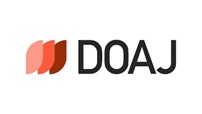Abstract
Based on the observation that insurance companies in Korea, unlike those in other financial sectors and those in other countries, dominantly use the agent-based push-type marketing strategy, this paper hypothesizes that difference in distribution systems originating from characteristics of financial products can lead to welfare asymmetry between financial institutions and customers, merely due to their financial matching. For this analysis, we employ a simple matching theoretic model, try to understand the welfare implications of distribution systems from a matching theoretic perspective, and analyze the bottom of negative perceptions of insurance industry. The proposed model suggests that this welfare asymmetry derives mainly from financial matching through the distribution systems, which implies that any efforts to improve the insurance industry must consider changes in the matching process, namely the distribution system. We hope that this paper complements and extends the existing literature on insurance distribution systems in terms of methodologies and research subjects.
Recommended Citation
Lee, Yong-Ju
(2016)
"Distribution Channel, Matching, and Welfare Asymmetry in the Korean Insurance Industry,"
Asia Marketing Journal: Vol. 17
:
Iss.
4
, Article 5.
Available at: https://doi.org/10.15830/amj.2016.17.4.89
Creative Commons License

This work is licensed under a Creative Commons Attribution 4.0 License.





